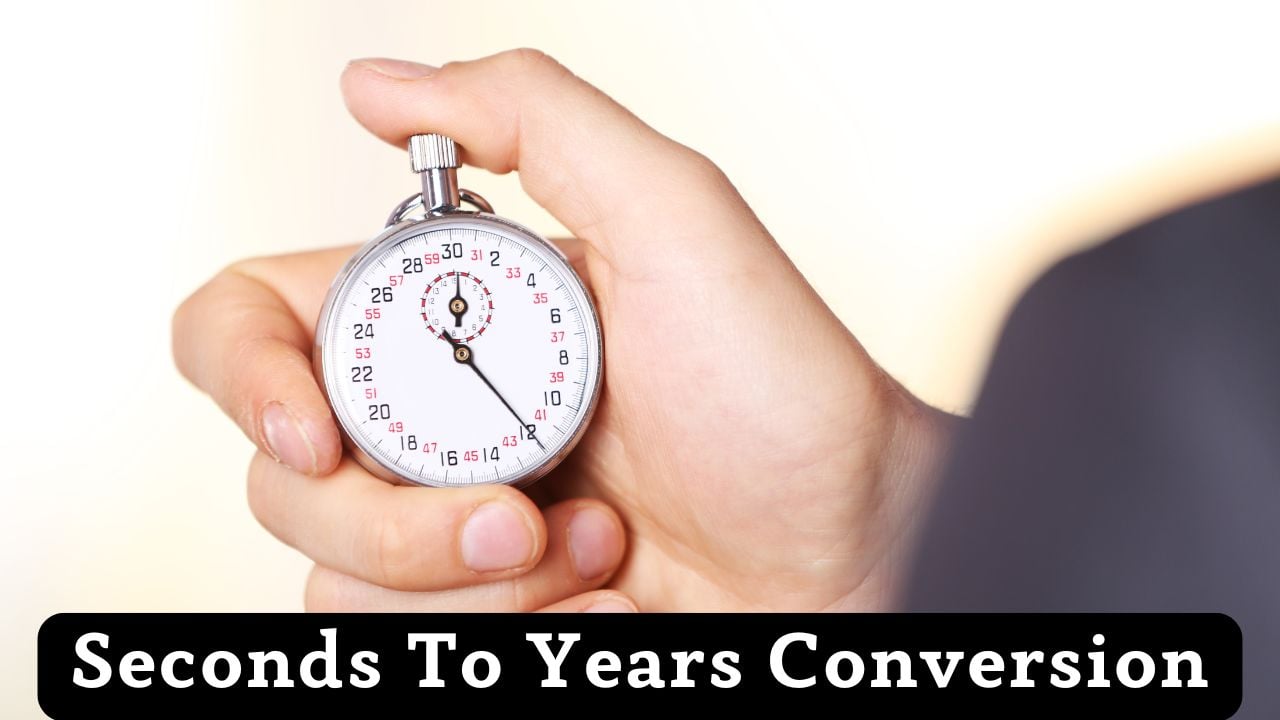Seconds to Years Calculator
Precise time conversion with detailed breakdowns, quick presets, and educational insights

How Many Seconds in Years
There are approximately 31,536,000 seconds in a year (365 days). Converting between seconds and years helps understand vast time scales, from scientific measurements to astronomical calculations and life planning.
The Conversion Formula
Years = Seconds ÷ 31,536,000
Seconds = Years × 31,536,000
This calculation uses the standard year of 365 days. For leap years (366 days), use 31,622,400 seconds.
Example: 63,072,000 seconds ÷ 31,536,000 = 2 years
Time Unit Breakdown
Understanding the time hierarchy:
1 Year: 365 days (366 in leap years)
1 Day: 24 hours = 86,400 seconds
1 Hour: 60 minutes = 3,600 seconds
1 Minute: 60 seconds
The second is the base unit of time in the International System of Units (SI)
Quick Reference Table: Seconds to Years
| Seconds | Years | Decades | Common Usage |
|---|---|---|---|
| 31,536,000 | 1.000 | 0.100 | One year |
| 63,072,000 | 2.000 | 0.200 | Two years |
| 157,680,000 | 5.000 | 0.500 | Five years |
| 315,360,000 | 10.000 | 1.000 | One decade |
| 1,576,800,000 | 50.000 | 5.000 | Half century |
| 3,153,600,000 | 100.000 | 10.000 | One century |
Frequently Asked Questions
Why convert seconds to years?
This conversion is essential in scientific research, astronomy, geology, and data analysis where measurements span vast time periods. It helps put large time scales into human-understandable terms.
How accurate is the 31,536,000 seconds per year?
This is accurate for a standard 365-day year. However, leap years have 31,622,400 seconds, and the actual solar year is approximately 31,556,925.9747 seconds (365.24219 days).
What about leap years in calculations?
For precise calculations over multiple years, consider that leap years occur approximately every 4 years. The Gregorian calendar averages 365.2425 days per year over a 400-year cycle.
When would you need seconds-to-years conversion?
Common uses include scientific data analysis, computer timestamps, geological time scales, astronomical observations, radioactive decay calculations, and converting Unix timestamps to human-readable dates.
Fascinating Time Facts
Atomic Precision: The second is defined by the radiation frequency of cesium-133 atoms, making it one of the most precisely defined units in science. One second equals 9,192,631,770 cycles of this radiation.
Computer Time: Unix timestamps count seconds since January 1, 1970, making seconds-to-years conversion crucial for programming and data analysis. The “Year 2038 Problem” occurs when 32-bit systems can’t handle timestamps beyond 2,147,483,647 seconds.
Cosmic Perspective: Light travels about 300,000 kilometers per second, so in one year (31.5 million seconds), light travels approximately 9.46 trillion kilometers – defining a light-year, astronomy’s fundamental distance unit.
Understanding seconds-to-years conversion helps bridge the gap between precise scientific measurements and human-scale time perception, essential for fields ranging from physics to finance.
